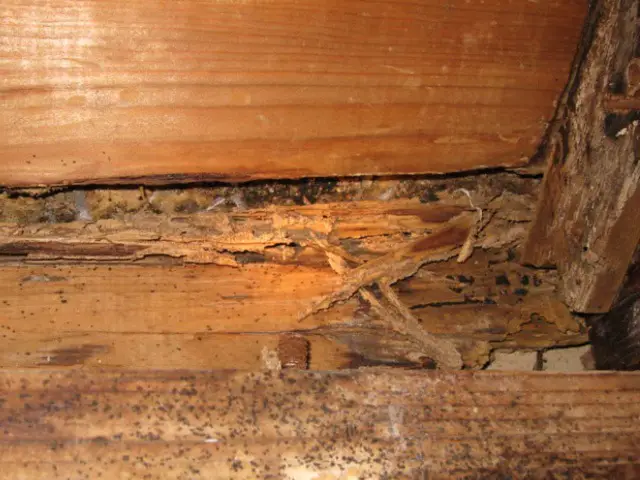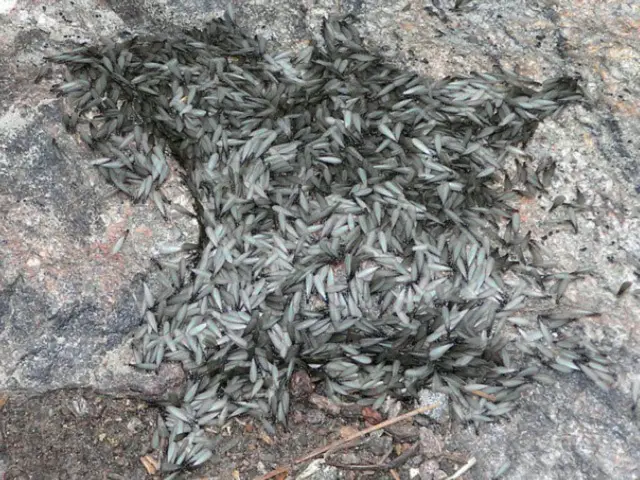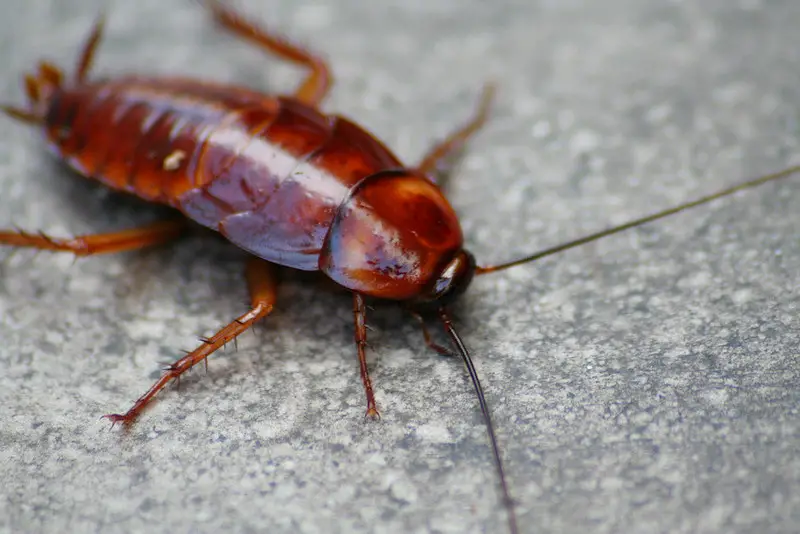In the past, pest control methods, such as chemical sprays, have often been the subject of public concern as environmentally unsafe. However, now green pest control methods have earned a lot of attention for removing pesky insects and rodents from the home.
Pest Control Methods for Your Home
An environmentally conscious pest control company will work with the natural environment to determine the best strategies for eliminating animal and insect problems. The foundational principle of green pest control is to identify the root of the problem rather than simply covering it up with toxic chemicals.
Not only is green pest control better for the environment and the safety of your family, but it can also be more effective and cost-efficient. Learn how eco-friendly pest control can help eliminate your rodent and insect problems for good.
Green Pest Control — Pest Exclusion
A popular green pest control method for insects and animals is pest exclusion. With exclusion, your pest control company uses eco-conscious strategies to find out the source of attraction, as well as how these pests invade your home. In spotting the causes of infestation, green pest control can remove the motivation for pests to invade your residence.
For example, a green pest control company may use glue traps to identify where pests gain entry to your home with rodent control. From that knowledge, they can seal the areas, barring admittance. Insects, small cockroaches and even mice can enter your home under a doorway with only a slight amount of room. Green pest control may be as simple as installing a door sweep.
Depending on the situation, trapping may be necessary to remove and exclude pigeons and other rodents, such as rats and mice. Thus, trapping, coupled with eliminating the sources of entry, can result in a successful eco-friendly pest control solution.
Green Pest Control — Environmentally Friendly Chemical Treatment
At times, chemical treatment for pest control is unavoidable, as in some cases such as termites, ants, cockroaches and birds. However, there are plenty of effective products with low toxicity, considered nominal risk by the EPA. In using these products during appropriate times of the year, your pest control company is doing its part to promote eco-consciousness and pest control.
Environmentally-friendly pest control is safer for your home and family. It’s also a long-term, cost-effective solution to the problem. Be sure to hire a qualified professional with experience in eco-conscious pest control, and you’ll have peace of mind for the planet, as well as for your home.
Why Arizona Has A Growing Rat Problem
In the pristine and exclusive community of Paradise Valley, Arizona, rats have moved in. Unfortunately, the rats have no plans to vacate this oasis’s lush and beautiful surroundings. The pack rat and the now quite infamous roof rat have become the latest residents of Paradise Valley. This Phoenix rodent invasion leaves homeowners puzzled by how and why roof rats and pack rats have come to the area. The costly damage and annoying presence of such rodents in Paradise Valley should be a reason for concern for all homeowners in this Phoenix neighborhood, particularly as the damage is being caused at an alarming rate. These rodents ruin attic insulation, destroy electrical wiring, tear roof underlayments, chew plastic piping, and deposit disgusting and disease-laden urine and feces in the Paradise Valley homes they have infested. The cost to Paradise Valley homeowners is often alarming, with insurance companies offering little or no help for rodent damage.
Why Paradise Valley?
Paradise Valley is the location of some of the finest and most exclusive homes in all of Arizona. Paradise Valley can be seen as the ultimate desert oasis for any living creature with sprawling estates, lush gardens, highly manicured desert landscaping, a healthy assortment of fresh citrus fruit, and a fantastic array of swimming pools. What living creature, human or rodent, wouldn’t want to make Paradise Valley their home? The answer to this question points toward the beauty and vast desert resources found in Paradise Valley. Rodents need free space to roam, habitat to hide, readily available water sources, easily attainable food to consume, and safe places to breed. Not to make any comparisons between humans and rodents – which have the residents of this exclusive Phoenix neighborhood in an uproar—but Paradise Valley is highly a highly desirable place to live and raise a family. The Roof Rat and packrat have made it clear that they can also thrive and grow in population in Paradise Valley. With ever-present resources and large attics to both breed new rat babies, as well as hide from their natural predators, pack rats and roof rats will likely remain in Paradise Valley for many more years.
How did Pack Rats and Roof Rats come to Paradise Valley?
As the building continues up into Phoenix’s hillsides and rocky desert mountains, sprawling home sites have encroached into the rodent’s natural desert habitat. This has offered the native pack rat many new opportunities to find success in growing their population. The infamous roof rat has made the transition into Paradise Valley from neighboring Phoenix communities. Only a few short miles away from Paradise Valley are the Biltmore and Arcadia neighborhoods. The roof rat and pack rat populations are continuing to grow, making places like Arizona, California and South Western states susceptible to rodent invasions. With an increasing presence of roof rats and pack rats in Phoenix, infestations of rodents are a real threat to Paradise Valley homeowners and many residents.
Pest Control for Businesses
As with homeowners, businesses in Phoenix are not spared from potential rodent problems. A variety of pests, including termites, can invade and wreak havoc on commercial buildings and the surrounding property, creating a serious pest control issue. Unsightly rodent problems can quickly turn a tightly run ship into a massive wreck.
If your commercial property is being overrun by rodents, your best recourse is to locate a qualified Phoenix pest control company to remove your rodent problems before they run your business into the ground. Learn more about the intricacies of commercial pest control and how to find the right pest control company for your business.
Common Rodent Problems for Commercial Property Owners
Pigeons, squirrels, rats, mice and more can invade your commercial property much more easily than they would a home. Phoenix businesses that operate around the clock or have a lot of in and out foot traffic are even more susceptible to rodent problems.
Related post: How to keep squirrels off the roof?
Manufacturing facilities, restaurants, hotels and health care facilities are at serious risk by unwittingly housing rodents. In addition to the property damage caused by a pest control problem, commercial structures that specialize in food, hospitality and patient care are subject to state health code standards, the failure of which can shut down a facility.
Larger commercial structures are particularly vulnerable to pest control problems that involve pigeons, as there are often numerous opportunities for nesting and roosting. Pigeons create an entirely different breed of rodent problems, taking over your rooftop, air conditioning units, parking lot and more, clogging these structures with their infectious waste.
Hire an Experienced Pest Control Company to Protect Your Business
When selecting a pest control company, you want to find a specialist who has experience handling rodent problems specific to your industry. For example, a Phoenix pest control professional who specializes in government buildings will have the necessary certification and training that adheres to the particular regulations for these structures.
If you operate a restaurant, health care facility, hotel or other hospitality facilities, your best bet is to hire a pest control specialist who understands health code standards. Additionally, since often these types of establishments operate 24 hours a day, a pest control company that can provide services after regular business hours or at off-peak times can help you avoid any further disruption caused by rodent problems.
Scorpion Control and Scorpion Proofing
In Arizona, there are particular problems with bed bugs, rodents, bugs, pests and insects because of the state’s location in the middle of the desert. Many of these pesky creatures are just nuisances, but others are a real threat to your health. Scorpion control is one of those dangerous pest control situations.
How to get rid of scorpions?
Scorpions are arachnids with four pairs of legs and pincer-like pedipalps used to capture prey. They are also covered with different kinds of sensory hairs. The abdomen has 12 segments, with the last five forming the “tail,” or metasoma.
At the end is the telson, a bulb-like bit that contains the venom glands and a curved, razor-sharp stinger that transmits the poison. Scorpions can reach lengths of over eight inches, while giant desert hairy scorpions native to Arizona are usually about five inches in length.
How to tell if a scorpion is poisonous?
It’s easy to see why scorpions are so dangerous. These predatory insects feed on other insects, centipedes and spiders, while larger scorpions will dig into vertebrates like snakes, mice and small lizards.
The venom in a scorpion is for defense and seizing prey. Scorpions have adapted to desert living, with extra layers of fat on their exoskeletons to minimize the amount of water they lose in the heat. In short, with over 35 known species of scorpions, the chances of one crawling into your home is a scary yet likely thought.
Scorpion Control Solutions
Controlling scorpions is difficult, so you need to be vigilant about the upkeep of your home in order to reduce the risk of a scorpion population growing. Remove trash, logs, stones, bricks and other objects where they could hide. Mow the grass as close to the home as possible and keep the bushes and trees neatly trimmed.
Install weather stripping around doors and windows with possible cracks or openings. Plug in holes around the house with steel wool or nylon scouring pads.
If you think you may have a scorpion infestation, do not wait to call an extermination agency! These are very feisty creatures that you do not want to mess with, so get a pest control specialist who understands how to get rid of these things safely and effectively.
Licensed and qualified inspection agencies will have trained technicians who know the biology of different scorpions and thus will know how to handle them best. Spring is the busiest season, so try to find testimonials or other records that show how busy the company is during this time. Don’t wait for scorpions to enter your home. Call a scorpion control company now.
Bat Removal
While they get a bad reputation as blood-sucking beasts or transforming vampires, bats are relatively harmless creatures. However, they can be a real annoyance and potentially spread rabies. If you think you have bats in your house, you need to know how to handle them before they nest and breed in your home.
The Truth About Bats
Bats, despite their ability to fly, are common mammals in North America. Nearly all bats eat fruit and insects. In fact, eating insects makes bats an important part of insect control and essential to the ecosystem.
These winged creatures thrive in areas with lots of food and shelter and are attracted to dark, quiet spaces away from predators. Natural habitats include caves and other secluded areas, like barns, attics and sheds.
Roosting for bats occurs for three reasons: eating, sleeping and breeding. Bats are often seen hanging upside down from rafters and trees in order to digest the previous night’s meal.
In colder climates, bats want to live in stable weather conditions and will wait out the cold season by huddling together in groups and hibernating. During the mating season, bats seek out protected environments to form nursery colonies. Female bats will share the same roost and create a colony of bat babies.
What to Do When You Find Bats
Since bats can fit into half-inch openings, practically every manmade structure is a veritable hiding place. Some of the more common places you could find bats are in attics, barns, storage sheds and unused structures like a dog house, along with chimneys, sidings, soffits, roof tiles and eaves.
When you actually find a bat, whether it flies into your house or rests somewhere in or around your property, you do not want to handle it. Bats are shy, meek animals and do their best not to come into contact with humans.
If you try to grab the bat, you are setting yourself up for bat bites, which can lead to rabies. Although few bats actually have rabies, it’s still possible, considering that over half of all rabies cases are from bat bites each year. Do not touch or handle the bats and be very careful when you’re close to them.
Removing Bats
If a bat is in your house, seal it off from the rest of the house by closing the doors. The bat is probably very scared, so if you leave all the windows and doors open, it will get the message and leave on its own. Those who try to capture a bat should not use bare hands. Instead, get heavy work gloves and a small container, such as a coffee can, to trap the bat and release it outside.
If you want to get rid of bats, you need the help of an expert exterminator or pest control business. Hundreds of bats live together at any given time. If you notice droppings or dark smudges in places like a barn or shed, call someone who can use exclusion methods to force the bats to leave without coming back.
Scientific Name of Bats: In Arizona, 28 species in 4 families: Mormoopidae, Phyllostomidae, Vespertilionidae, Molossidae
Description of Bats: Currently, there are about 1,000 species of bats around the world. Of those, forty-six species live in America. Twenty-eight of them reside in the state of Arizona.
Bats in the Southwestern United States vary in size. There is the tiny western Pipistrelle (Pipistrellus Hesperus). This bat only weighs about two-tenths of an ounce. The Pipistrelle has an eight-inch wingspan. The Western Mastiff Bat (Eumops perotis) boasts a wingspan of close to two feet and a weight of 2.1 ounces.
Bats Range and Reproduction: Bats are highly prolific and may be found in nearly every habitable climate in the world. Despite this, they are increasingly rare in Arizona due to the loss of habitat. Bats will roost in caves, attics, under exfoliating bark, bridges, in mines or any other protected area available.
Female bats usually have one pup each year. It’s rare for a bat to give birth to two pups. Only a handful of bat species bear three or four pups. Interestingly, bat pups are born feet first, which is unique among mammals. The mother bat hangs by her thumbs, curls her tail and feet inward and upward, making a cradle or basket to catch her baby.
Health Information about Bats: Although bats can contract and transmit rabies, it is not as common as with other mammals, like rats and skunks. Unlike some other animals, bats are weak and unable to fly when rabid. If you find a bat on the ground, it’s most likely a sick bat. Please do not touch it. It may bite in defense if you do. If necessary, use gloves to move it away from children and pets. Interestingly, antibodies found in healthy bats suggest that bats sometimes recover from rabies.
In Arizona, species of bats have tested positive for histoplasmosis – an infectious fungus that bats carry that spreads in bat guano. Individuals who stir up guano to clean out areas may come into contact with spores and become ill as a result. Most cases are mild; however, those with weak immune systems may have difficulty recovering.
Important Facts on Bats:
- Bats are a unique and important part of our ecosystem. Humans depend on bats for crop pollination and insect control.
- Bats are never to be killed. Exclusion, trapping, and removal methods are highly successful and effective in keeping Bats out of homes and businesses.
- Arizonans rely on Bats to help perpetuate the natural beauty of our state by aiding in the pollination of saguaro and other cactus varieties.




